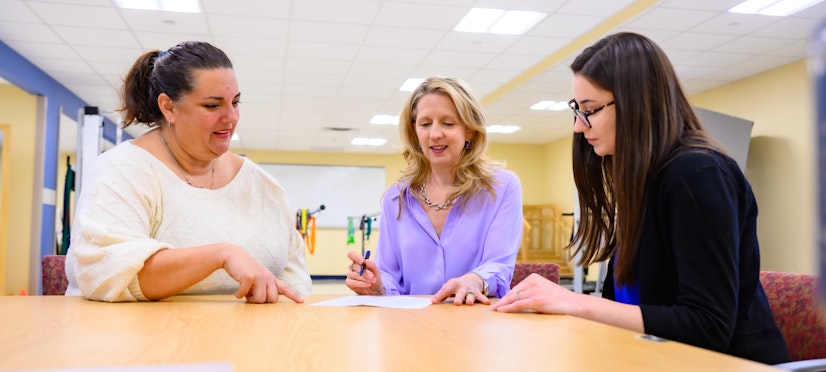Megan Burkart has always loved being “the hope in the room.” As West Virginia’s only board-certified oncology physical therapist (PT), she helps people with cancer see past their immediate challenges and work toward goals.
“Cancer treatment can cause fatigue, muscle weakness, balance issues, and other problems that affect your ability to engage in activities you enjoy,” says Burkart, who provides outpatient oncology PT for patients at the WVU Cancer Institute Mary Babb Randolph Cancer Center in Morgantown. “No matter where you are in treatment or recovery, my team can help. We want people to live their lives, not give up on things because they had cancer.”
About 80% of cancer survivors have at least one physical impairment caused by the disease or treatment. The average is more than two impairments. Unfortunately, only 1-2% of these individuals receive a PT consult.
“Without PT, a lot of people accept the side effects of cancer as their new normal,” says Burkart, a Morgantown native.
Burkart is a trailblazer in the field of oncology PT. She was one of the first PTs in the country to achieve board certification and has been caring for patients in Morgantown since 2013. In 2023, she helped launched a West Virginia University Physical Therapy residency program at WVU Medicine to train future oncology PTs. Victoria Pfab is the program’s first resident and, along with Burkart, sees patients in the oncology PT clinic.
Personalized Evaluations and Treatment Plans
The first step for patients is to schedule a one-on-one oncology PT evaluation. During the one-hour appointment, the PT will:
- Evaluate your strength, range of motion, balance, and coordination
- Ask you about any pain you experience
- Talk with you about your goals for PT
- Develop a personalized treatment plan, which can include traditional PT exercises, hands-on therapy such as tissue massage, and low-impact cardio exercise
- Teach you a few exercises to do at home
Most people who see Burkart or Pfab have one PT session a week. The number of sessions depends on the needs and schedule of the individual.
If you don’t live near Morgantown, Burkart can coordinate with a PT closer to home to ensure you receive the care you need. She will share detailed information about your evaluation, goals, and treatment plan and be a resource to your hometown provider if needs arise.
Therapy That Matches Your Energy Level
If doing PT after all you’ve been through with cancer feels intimidating, Burkart has great news for you. “No one leaves our PT sessions sweaty, exhausted, and in pain!” she explains. “I choose exercises for each person based on their goals, energy level, and abilities. We also spend time talking about lifestyle changes that can enhance recovery.”
Burkart wants patients to be as active as possible, which she recognizes can be challenging for some. “Cancer causes fatigue, and getting the rest you need is essential,” she explains. “But being physically active is important as well. It helps you tolerate treatment better, lessens side effects, and improves your mental outlook. I tell patients, give me just three minutes of activity, and it will change your life! We can start small and build from there together.”
Specialized Therapy for People with Lymphedema
As part of her oncology PT practice, Burkart is a certified lymphedema therapist and works closely with other Mary Babb Randolph Cancer Center providers to help patients manage lymphedema symptoms.
Lymphedema is a side effect for many women who had lymph nodes removed as part of their breast cancer treatment. This condition causes swelling in the arms or legs that may be accompanied by pain or discomfort. Specialized care, including PT, occupational therapy, and custom bras, can help.
“Lymphedema can develop in the months after surgery or even 20 years after cancer treatment,” Burkart says. “Our team uses many techniques to help women dealing with this condition, and it’s best if patients see us as soon as they start having symptoms.”
‘I Needed This’
Burkart and Pfab love getting to know each patient personally and cheering them on as they progress.
Recently, Pfab began seeing a patient who had put off PT for a year due to fear. At her first appointment, the patient had to use a walker and took a half-minute to rise from a chair. Within a few weeks, she could do light exercise and attend her grandchild’s soccer games.
“She said, ‘Tory, thank you – I needed you, and I needed PT to give me hope,’” Burkart says with a smile. “That’s the kind of success we love to see.”
